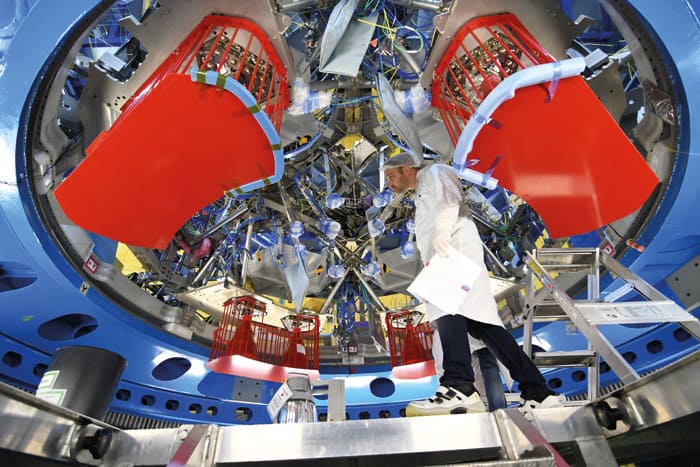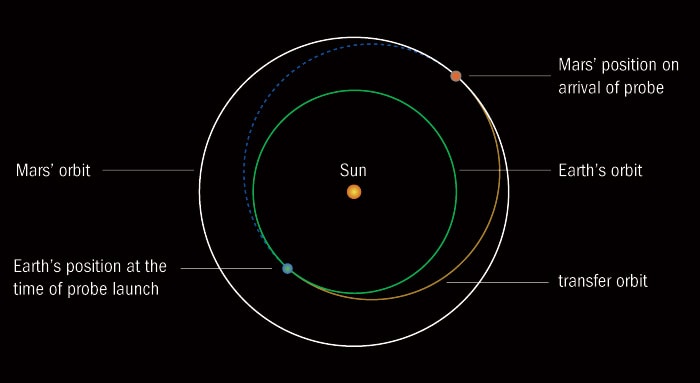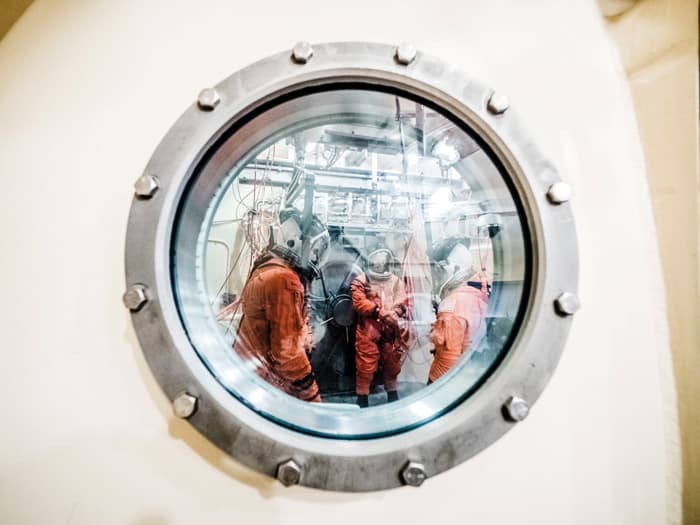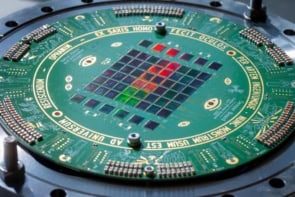With ambitious plans being dreamed up to send astronauts to the red planet, what challenges would face them if they ever went – and what technology would they need? Stephen Ornes finds out
In most Hollywood movies, interplanetary travel seems fairly straightforward: hop on a spaceship, blast off, fly through space (with or without hibernation that may or may not go awry), land on foreign soil. But throw in the known and unknown hazards of deep space physics, multiplied by the limitations of the human body, and the adventure becomes decidedly more complicated.
Yet something about going to Mars has captivated the space-curious for generations; from scientists who want to build the spaceships and go, to politicians who can approve the spending. “Mankind is drawn to the heavens for the same reason we were once drawn into unknown lands and across the open sea,” said US President George W Bush in 2004, when he proposed spending $12bn to get to the Moon by 2020 as a stepping stone to Mars. Not to be outdone, President Barack Obama announced in 2016 that he wanted to get people to Mars by 2030, and more recently, President Donald Trump signed a bill authorizing $19.5bn to go towards NASA’s quest to have humans visit Mars. (“You could send Congress to space,” one senator quipped at the signing.)
Getting people to Mars is more than just political hyperbole, however, and that vision is slowly shifting from science fiction into science fact. This summer, the European Space Agency (ESA) plans to pack and ship a 4 m-tall and 5 m-diameter cylindrical space vehicle from Bremen, Germany, where it’s been under construction for the last four years. It will be sent to NASA’s Kennedy Space Center in Florida, where it will become an integral part of the most ambitious plan for space exploration ever hatched by humankind.
Orion’s quest to Mars
The huge cylinder is the service module for the Orion spacecraft and, once out of Earth’s atmosphere, it will extend solar panels stretching 19 m across to power Orion during its deep space travels. Inside the module, arranged like a dense 3D puzzle, are the wires, cables, devices and materials needed to support human beings as they voyage into deep space, including fuel, air, and water. Sitting atop the service module and measuring 3.3 m in height, will be the crew module, the astronauts’ home for their long journey.

For Orion, the ultimate goal is Mars. Despite being our nearest planetary neighbour, the red planet’s orbit keeps it an average of 225 million km away. (In theory, it could get as close as 55 million km, but that’s never happened.) Such a physical distance is staggering, even for physicists who think they’re familiar with the size of the solar system. “If I ball my hands together to make a globe and say that’s the planet Earth, then the space station is in orbit about half a centimetre above my hands, so it’s about the length of the hairs on the back of your hand,” says David Parker, director of ESA’s Human and Robotic Exploration programme, which has almost finished building Orion’s service module. “That’s where we are with the space station. The Moon is about 5 m away on that scale. But Mars – depending on where it is in its orbit relative to Earth – is somewhere between half a kilometre and three kilometres away.”
The journey will be arduous, not only given the travel time but also in terms of developing new technologies on a budget and through different administrations. Each step is more complicated and often riskier than the one before it. NASA’s current blueprint for a Martian journey, which the agency unveiled in 2015, goes something like this: explorers leave Earth perched on a powerful rocket and potentially rendezvous with a crewed space station near the Moon. (NASA is studying a concept for a station called the Deep Space Gateway – a kind of launchpad for missions to the Moon, asteroids and Mars.) After a few days preparing at the gateway, the crew would board a spacecraft that shuttles people to deep space and back.
For six months or more, the crew will travel – sealed in a box the size of a small motor home, and with a view of Earth receding to a tiny pinprick of light – until they reach Mars and begin to orbit the red planet. Then, they’ll move to yet another vehicle, parked in Mars’ orbit, and plunge through the planet’s thin atmosphere, landing near pre-built habitations, possibly 3D printed out of ice or regolith. They’ll stay for 18 months, conducting geological research and maintaining the habitat, then head home.
NASA wants to send colonists to Mars in the 2030s, and so too does Mars One – a non-profit, international effort launched in Europe. Meanwhile, SpaceX, an American company, wants to one-up both and get there a decade sooner. Later this year, the private company plans to test-launch its Falcon Heavy rocket – the most powerful rocket to date. It is designed to lift into orbit a mass equal to a jetliner packed with people and food, twice the payload of the closest operational vehicle, the Delta IV Heavy. For its inaugural launch, the Falcon Heavy will shuttle a red Tesla Roadster owned by Elon Musk – the founder of SpaceX – into an orbit around the Sun that will take it near Mars. By 2020 the company wants to fling rockets to the red planet to collect samples and bring them home; after that, it wants to send people. In September 2017 Musk, who trained as a physicist, discussed a new vehicle under development with codename BFR – “Big Falcon Rocket” (though some suggest the “F” has a different meaning). The BFR sounds like it should be in a Star Wars film – it’s a self-contained, super-efficient vehicle that looks like a modified space shuttle and would travel from planet to planet nonstop.
Getting to Mars means not only using physics and engineering to conquer the technical challenges of leaving the planet but also finding efficient strategies for long-distance propulsion, designing space suits and ships that protect bodies from cosmic rays and other radiation, and landing safely on a planet with a wispy atmosphere. After all that, there’s the additional problem of getting back.
But for the scientists and engineers involved, it’s a quest worth completing. “I can’t think of anything more exciting than going out there and being among the stars,” Musk said at the International Astronautical Congress (IAC) in Adelaide, Australia, last year.
Learning from mistakes
Our current knowledge about Mars and how to get there is the result of hundreds of years of accumulated curiosity. In the 17th century Johannes Kepler mapped its elliptical orbit and Galileo Galilei was the first to study the planet through a telescope. Later, in the 19th century, astronomers studied its geological features, dust clouds, and polar ice caps. Some reported the planet had green oceans and reddish land masses, spurring speculation about alien life.
NASA’s Mariner 4 spacecraft, which flew past the planet in July 1965, was the first messenger from Earth to reach Mars. Since then, space agencies around the world – including ESA and agencies in India and the former Soviet Union – have launched a total of 44 probes, orbiters and landers to explore the planet. But it’s not easy. Of those 44, more than half (23) have broken apart, exploded, crashed or otherwise failed. Currently, two rovers remain active on the planet’s surface, and six orbiters watch from overhead, while both ESA and NASA plan to launch Mars-bound spacecraft this year. This array of missions has given physicists and engineers a good handle on the basic mechanics of getting from here to there, including setting the initial launch conditions and following the most energy-efficient path – the Hohmann transfer orbit (figure 1). The launch window is also critical: leave too early or too late, and a spaceship risks whizzing out into deep space without intersecting Mars or being captured by Mars’ gravity.

Physically transporting anything to Mars – or anywhere in space, for that matter – requires finding a balance between minimizing mass and not leaving any essentials behind. The heavier the ship, the more fuel it will need; the more fuel it carries, the heavier the ship. NASA’s Space Launch System, a rocket system undergoing testing at the Marshall Space Flight Center in Huntsville, Alabama, is designed to be powerful enough to carry crewed missions to deep space destinations such as the Moon and Mars.
For human crews, there’s also the issue of sustaining life: the average person in a developed country uses about 100–150 litres of water every day. On the International Space Station (ISS), daily water use hovers around 11 litres per day, thanks to recycling strategies that recover water from the breath and urine of both human and animal crew members.
But the ISS also has reserve water tanks and orbits only a few hours away from Earth. A trip to Mars will take three years, which means “You have to scale up the amount you need to take to go and come back again,” says Parker. However, simply increasing the payload of an existing rocket isn’t feasible, he explains. Instead, scientists need to develop new materials and new ways to pack for such a long trip.
Shielding the humans
The biggest threat to human life on a Mars-bound mission may be the one we can’t see – radiation. “It’s certainly one of the biggest technical challenges,” says Parker. “Although the space-station astronauts are exposed to more radiation than we are on the ground, they’re substantially protected by the Van Allen belts.” These giant rings of charged particles, which originate from the interaction of the magnetic field and the solar wind, shield Earth from high-energy particles.
Going to the Moon or to Mars, however, means leaving the security of the magnetosphere behind. In deep space, radiation from sources such as solar activity and galactic cosmic rays, includes high-energy protons, photons and electrons. These particles can damage shields and penetrate many materials, including human skin. The harmful effects of space radiation accumulate over time, which means Mars-bound explorers on a three-year mission will be exposed to a radiation dose more than 100 times greater than the average dose received by Apollo astronauts, who were outside the magnetosphere for only a few days.
As Mars’ thin atmosphere doesn’t offer much protection, previous and ongoing missions to Mars have been vital in the design of materials that will keep Martian-explorers safe not only during the journey, but while they’re there. In a study published in 2014 (Science 343 1244797), scientists used data collected by the Radiation Assessment Detector (RAD) on NASA’s Curiosity rover – the first radiation analysis done on another planet – to estimate that 500 days on Mars would expose people to more than 120 mSv of radiation from the Sun and cosmic rays. That’s more than 100 times the average annual radiation exposure on Earth (figure 2). When they include radiation measurements collected during the travel to and from Mars, the researchers estimate total exposure could be as much as 1 Sv. Previous studies estimate that that much radiation would raise a 40-year-old man’s risk of dying from cancer to at least 4%, and a 40-year-old woman’s risk to 5%.

Before RAD, physicists had to rely on computer models to predict the radiation environment. “But as a good physicist, you need to do the experiments,” says Don Hassler of Southwest Research Institute in Boulder, Colorado. “You can’t believe your models until you’ve validated them.” As it turned out, existing models didn’t match the details of RAD’s data and had to be improved. Hassler, who led the 2014 study, says RAD’s data revealed unexpected variations in the radiation on the Martian surface, not only seasonally but also day to day. “The radiation environment is not a showstopper,” he says. “It’s like the weather. It needs to be managed.”
Real-world data will also inform the construction of a radiation-proof habitat on Mars. It would be cost-prohibitive to actually transport building materials to Mars, so a better tack would be to transport the tools instead. Indeed, NASA has sponsored a $2.5m challenge that invites people to submit designs for 3D-printed structures that could be forged from materials native to the planet, such as ice or regolith. The New York City-based architecture firm that won the first phase of the contest submitted a design of a house made of ice.
Soft landing
If you think getting off the ground and travelling across the solar system is a huge challenge, the last stage – the descent – may be the trickiest. Because of its mass, gravity on Mars is only about 38% as strong as on Earth. That seems like it would work in favour of a gentle descent, but there’s a catch – the atmosphere of Mars is 100 times thinner than Earth’s, and it’s composed mainly of carbon dioxide.

“It’s too thick to ignore and too thin to slow the craft down,” says anthropologist Jack Stuster, principal scientist at Anacapa Sciences in Santa Barbara, California, who has done research with NASA on astronaut behaviour.
Indeed, engineers monitoring NASA’s Curiosity rover, which arrived at the top of Mars’ atmosphere in August 2012 after an eight-month journey, called its descent to the surface “seven minutes of hell”. The rover, with its heat shield and sky crane, was too heavy for airbags, so its fall was slowed by a combination of parachutes and retrorockets. Communications between the rover and mission control required 14 minutes to get from sender to receiver, which meant that by the time NASA received a signal that Curiosity had started descending, it had already succeeded or crashed.
Fortunately, it succeeded where others had not. Most notably, in November 1999 the Mars Climate Orbiter incinerated in the Martian atmosphere because engineers had failed to convert between imperial and metric units.
A spacecraft carrying people will be much heavier than Curiosity, though, and with more valuable cargo. Engineers have proposed a variety of solutions to slow the descent, from heat shields and retro boosters to sky cranes. Parachutes aren’t a likely solution, as they’d have to be so big or numerous that they’d add too much risk and weight to the mission. “You’d need a parachute the size of the Rose Bowl,” says Stuster, referring to the 300 m-diameter stadium in Pasadena, California.
Meanwhile, SpaceX’s Falcon 9 rockets have successfully used retrorockets to land on their launch pads multiple times, and this is the same approach the company plans to use when it goes to Mars. “In order to land on Mars…you really have to get propulsive landing perfect,” Musk said. “That’s what we’ve been practising with Falcon 9. It’s quite mesmerizing.” And where the Falcon 9 rockets have been landing using only one engine, the BFR – the new vehicle under development – will have many.

The next chapter
NASA plans a series of missions that will precede and inform the first trip to Mars. In late 2019 or early 2020, Orion will go on a test flight, during which it will orbit the Moon for a few days and release some small Cubesats before returning to Earth. After that will come a series of missions: a year-long, crewed mission to deep space; a return to the Moon; an unmanned trip to an asteroid; and finally a crewed mission to Mars’ orbit.
Beyond the physics and technical challenges lies yet another hurdle: the human element. How do you choose who should go to Mars? The mission requires a lot of time living cheek-by-jowl with a handful of other people. Stuster, who in 1996 wrote a book about the psychology of astronauts called Bold Endeavors, has worked with NASA on refining the selection process. In addition, both NASA and ESA have sponsored Earth-bound experiments designed to simulate living on Mars, in which volunteers may be sequestered away in a habitat on the side of a Hawaiian volcano (a programme called HI-SEAS), in an uncharted Italian cave (CAVES), in Antarctica, or elsewhere.
It’s tempting to view the road to Mars as one long list of difficult, fascinating questions, but Hassler thinks we’ll see the answers ticked off quickly. “I’m a firm believer that we’re going to go there,” he says, “and I think it’s going to happen sooner rather than later. It’s a matter of will, and there are more and more people out there who are determined to do it.” So maybe one day soon, films about going to Mars will be real-life documentaries – and not simply works of science fiction.
Making money from Mars

The quest to send humans to Mars might seem like a dream, but that vision is slowly turning from science fiction to science fact. Indeed, several companies are getting in on the act, working with space agencies to design devices to make deep-space exploration feasible for humans. One firm is StemRad, which makes wearable shields to protect workers from gamma radiation released in accidents at nuclear-power plants here on Earth. Based in Tel Aviv, Israel, it has joined forces with US defence and aerospace giant Lockheed Martin to adapt its wearable technology for space.
The resulting vest, dubbed “AstroRad”, is designed to protect humans from ionizing radiation, which will be one of the biggest risks on any Martian journey. To check out its technology, the company will fit the AstroRad vest to a human mannequin on Orion, which is set to blast off in December 2019 on a test trip to beyond the Moon and back. Orion forms part of NASA’s Exploration Mission 1 (EM-1), which will also include the Space Launch System (SLS) to give the capacity to hurl the vehicle into space.
Eventually Orion will transport real people, though the only other passenger on the test flight will be another mannequin, travelling without an AstroRad vest, to act as a control for the experiment. Provided by the German Space Agency, both dummies will be fitted with sensors to measure how well the company’s vest protects the mannequin from space radiation. The work is vital for future Mars trips as human cells are highly sensitive to radiation-induced mutations during cell division, when DNA unzips to undergo replication.
The biggest test for the vest will come as Orion flies through the Van Allen belts, which surround the Earth and are rich with energetic particles. StemRad’s vest, which can be customized to fit individual astronauts, has therefore been designed to protect those cells that proliferate most rapidly, including those in bone marrow. “When you protect those parts of the body, you can reduce the likelihood of cancer dramatically,” says the firm’s chief executive Oren Milstein.
Another company involved in preparations for EM-1 is Thales Alenia Space – Europe’s biggest manufacturer of satellites. It has built many components for the European Space Module (ESM), which will provide the propulsion system for Orion and, in future missions, water, electricity and other necessities to Orion astronauts. The firm has been contracted to design and build a layered shield, reinforced with Kevlar, that will protect parts of the ESM from harm due to space debris and micrometeorites. At the speeds Orion will be travelling, even a metal flake as small as a fingernail could cause serious damage without shielding.
Also cashing in on a potential trip to Mars is Lockheed Martin, which has designed or built a number of spacecraft for NASA. It announced in February that it had welded together the first two pieces of the Orion capsule to be used on the successor mission to EM-1. Known as Exploration Mission 2, it will carry real humans into deep space, with a test mission slated for launch in 2022. Meanwhile, Orbital ATK, an aerospace and defence company headquartered in Dulles, Virginia, has contributed to the design and build of many components of the SLS.
As for BWX Technologies, based in Lynchburg, Virginia, it announced last autumn that it had won an $18.8m contract from NASA to design a nuclear-propulsion reactor as part of an engine for a manned spacecraft to Mars. Using nuclear power instead of chemical fuels could cut the mass of the propulsion system and potentially shorten the travel time. That in turn – says BWX – could reduce radiation exposure.
NASA enlists many of its commercial allies through its NextStep programme, which seeks to create public-private partnerships to accelerate the pace of development. Through this project, the Sierra Nevada Corporation is currently designing components of a human habitat that could be used for long missions. It is also working on a spacecraft called Dream Chaser to carry cargo to the International Space Station.
The company was in addition selected last year – along with rival US firms Boeing, Lockheed Martin, Orbital ATK and SSL – to carry out studies on power and propulsion systems for a possible “deep space gateway”. Envisioned as a kind of “spaceport” near the Moon, it would be an important stop en route to Mars, with the power and propulsion systems providing electricity to keep the gateway running and to let it move to different orbits.
Another area of commercial interest lies in developing space-based habitats that could both sustain life and protect it from radiation. Several firms are involved here, including Bigelow Aerospace, based in Las Vegas, which has designed human habitats that can be inflated in space. Looking like giant marshmallows, these habitats might work in a variety of space settings and the firm says it wants to launch an inflatable pod to orbit the Moon by late 2021 as a deep space hotel called “Aurora Station”.
And then there’s SpaceX – the company that’s paving its own path to the red planet. Founded by the former physicist Elon Musk, its mission is to get people to Mars in the next decade. In February this year SpaceX launched its Falcon Heavy Rocket towards Mars’ orbit, carrying Musk’s very own cherry-red Tesla roadster. Some may view Musk as a publicity-seeker, but SpaceX has helped to highlight the real, commercial opportunities that Mars offers for businesses.




